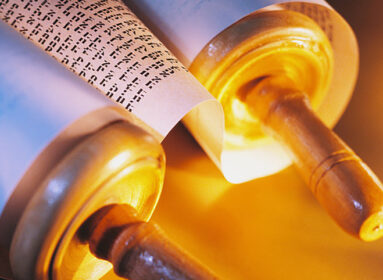
Shabbat Chol Hamoed Pesach
On Seder night, we are commanded to tell the story of the Exodus from Egypt. The Mishna tells us that the retelling should be done in response to questions posed by the children. If they have no questions, we teach them the four questions, which form the “Ma Nishtana.” Today, at every seder table the questions are asked and the answers discussed. But there is one question that has always disturbed me: “On all other nights we do not dip even once and on this night of Passover we dip twice.” This particular question is never answered within the Maggid portion of the seder. The fact that we do have “dips” as a kind of ‘forshpeis’ to our seder meal is certainly in keeping with the Passover feast, but why our specific dips of karpas (green vegetable) in haroset; (haroset was used by the Rambam, Yemenite community and many other communities as well) and then the bitter herbs in haroset?
Another question. We all enjoy a spirited singing of “Dayenu,” the quintessential thanksgiving to G-d for every step through which He guided us on the road to redemption. “Had He taken us out of Egypt and not wrought so many judgments against the Egyptians, it would have been sufficient – dayenu … etc.” However there is one line in this song of praise which has always troubled me: “Had He brought us in front of Mount Sinai and not given us the Torah, it would have been sufficient – dayenu.” In what sense would it have been enough? What value could there have been for G-d to have taken us close to the mountain without revealing to us His laws?!
The fact is that the entire drama of the servitude and exodus from Egypt began with an act of ‘dipping’ and concluded with an act of ‘dipping’. The Israelites initially made their way down to Egypt as a result of the fact that Joseph, the son of Jacob, was sold into Egyptian servitude by his brothers. Since the brothers had to offer some explanation for Joseph’s mysterious disappearance, they dipped his special coat of striped colors which his father had given him in the blood of a slain goat. When Jacob saw the bloodied garment of his beloved son, he assumed that Joseph’s body had been torn apart by a wild beast. Our Sages teach us that it was the sin of the brotherly strife and hatred that was responsible for the enslavement of the Israelites in Egypt (B.T. Shabbat 10a). Hence, some Jews have the tradition of dipping the karpas not only in salt-water symbolizing the tears that the Jewish people shed but also in the red haroset, which according to the Jerusalem Talmud symbolizes blood, expresses the tragedy of Jewish internal hatred – the root cause of our exiles and persecutions.
The second dipping took place at the end of the Egyptian enslavement, and the beginning of the Hebrew emancipation. At this time, each Hebrew family slaughtered a lamb in preparation for their exodus; “You will then take a bunch of hyssop and dip it into the blood (of the lamb) which will be placed in a basin. Place some blood on the beam over the door and the two doorposts after you have dipped your finger in some of the blood in the basin. Not a single Israelite may go out of the door of his house until morning.” (Exodus 12:22) The blood of the lamb represented the willingness of the Israelites to sacrifice an Egyptian god (for such was the lamb) to their higher belief in the Lord of redemption and freedom. They performed this pascal sacrifice during the time of the killing of the first born of the Egyptians – a plague from which the Hebrews were saved by the blood that was on their doorposts. The Israelites were all united in their commitment to the Almighty and fulfillment of this command. The second act of dipping served as a tikkun or repair of the first; the sin of brotherly strife found its repentance in the form of brotherly unity, by which merit we were redeemed from Egypt. This explains both dippings at the seder and intensifies the fact that if only we as a nation could be united together, no force on earth would be able to harm us.
When the Bible describes the momentous Revelation at Sinai, we are told, “They had departed from Rephidim and had arrived at the Sinai desert, where they (the Israelites, in the plural) encamped in the desert; and Israel encamped there (in the singular) opposite the mountain” (Exodus 19:2). The change from plural to singular within one phrase is quite remarkable. The classical commentator Rashi comments, “As if they were all one individual with one heart.” It was their very unity of purpose and commitment – their togetherness as a nation that enabled them to merit the Revelation. This I believe is the meaning of the “Dayenu” song: Had the Almighty merely brought us in front of Mount Sinai with singleness of goal and united in spirit, even before He gave us the Torah, that unity would have been sufficient!
Rabbi Shlomo Riskin is chancellor of Ohr Torah Stone and chief rabbi of Efrat, Israel.








 Southern New England Jewish Ledger
Southern New England Jewish Ledger








